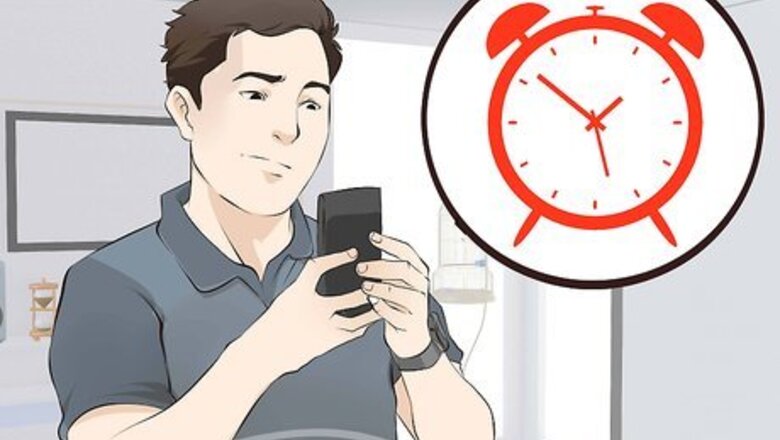
views
- Body language (including eye contact and posture) indicate a person's interest. You can also their tone or read between the lines when chatting online.[1]
- End the conversation by bringing it full circle and thanking the other person for their time. Offer an excuse if needed and ask to continue the chat later.
- Send a friendly follow-up message later and analyze the response to see if they're more open to talking. They might have been having an off day!
Reading Body Language and Speech Patterns
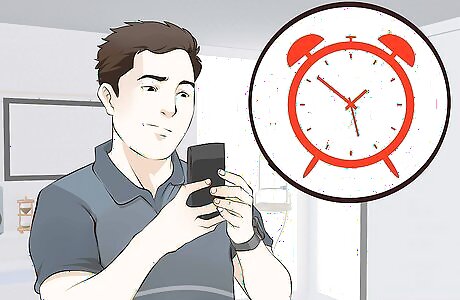
Read between the lines. If you’re texting or using social media sites, you cannot see their body language or hear their tone unless you are having a video call. But by reading responses and seeing how long it takes for the person to respond, you can gauge if the person doesn’t want to talk to you. Look for a “read” indication on sites like Facebook, Instagram, or Whatsapp. If there is a long lapse between your text and the response, or if the person doesn’t respond at all, she likely doesn’t want to talk to you. You can never be completely sure what is going on, though. It might be that she is busy or forgot to answer your message. Notice if the person goes offline when you send them a message. It could be that she doesn't want to talk to you, but once again you can't really know what is going on. She might be busy. Check the person’s responses. If they are one word such as “yeah,” “sure,” or something along those lines, chances are they’re no longer interested in the conversation or don’t want to talk to you.
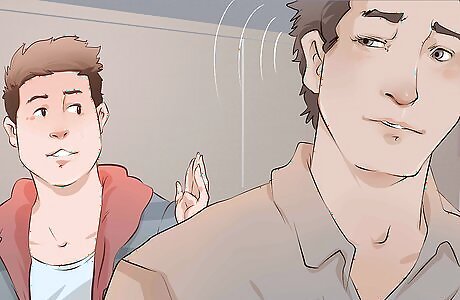
Hear the person’s tone. The tone of voice someone uses when speaking to you can tell you a lot about how they are feeling. Noticing the tenor of the conversation can help you figure out if the person isn’t engaged and cue you to exit elegantly. Ask yourself the following questions about the tone: Does she sound irritated when I say something? Does he seem tired, slow, or bored when he responds? Does she sound pleasant or excited about our interaction? Does it seem like she’s questioning everything I say?
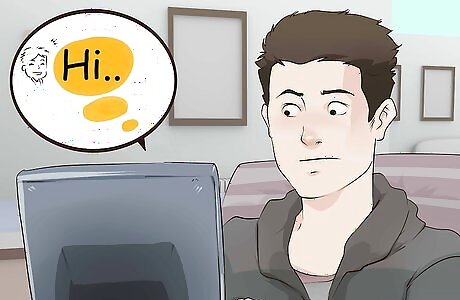
Figure out who is leading the chat. If you suspect a person doesn’t want to talk to you, figure out who is leading the conversation. This can also indicate if your conversation partner has checked out and you need to stop talking. Notice if you hear your own voice considerably more than that of your chatting partner, which can be a sign she is no longer interested in the conversation. Hold back a bit to see if the person begins talking more. This can indicate that she wants to talk but you’re overwhelming her. Check to see if you are integrated into the conversation if there are more than two people in the group. If not, try saying something and see how the other participants respond.

Listen to responses. The ways that someone responds to your questions and statements can tell you a lot about whether they want to talk to you. The following types of responses can indicate the person is bored with the conversation or doesn’t want to talk to you: Using lazy responses like “oh really,” “you’re so right,” or “totally.” Mirroring the language you use such as “It’s really cold today” with “Yes, it is cold.” Ignoring questions or statements Giving one word or closed statement answers including a simple “no” or “yes.” Using gestures such as a head nod can also indicate that a person doesn’t want to talk.
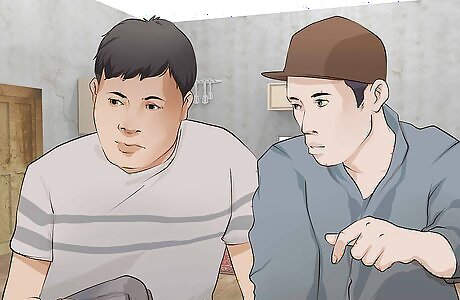
Watch for eye contact. There is an old adage that the eyes are the windows to a person’s soul. Watching a person’s eyes during a conversation can let you know if they want to talk to you. The following signs might indicate your conversation partner is finished: Looking at the floor Staring around the room Watching the clock. Glazing over of their eyes.
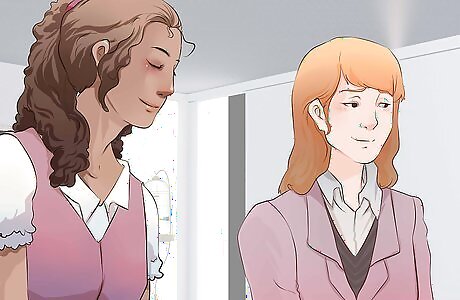
Note body position. Just as where a person’s eyes are positioned can tell you about their engagement in the conversation, so can the body posture. Look at how the person is standing to see if she is interested in talking to you. See if the person if mimicking your posture and pointing her body towards yours. If she’s not, then she has likely checked out of the conversation. Check if the person is facing towards you. If she isn’t, she probably wants out of the conversation. See if the person’s feet are pointing towards you, which can also indicate if they’re into the chat. Note the space between you and the person. If she is not close to you, she probably doesn’t want to talk.

Check body language. Body language is a great cue about how a person is feeling about you or your conversation. Some examples of body language that could indicate the person doesn’t want to talk to you are: Stiff or immobile body Tense and raised shoulders Crossing arms over the chest Touching your neck or fingering your collar Fidgeting or doodling. Yawning.
Excusing Yourself Politely
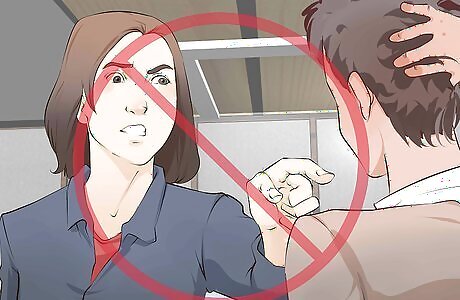
Avoid panicking or getting angry. Sometimes people just don't feel like talking, could be busy, or something might have happened in their personal life. Try and not panic and don’t get angry with the person. Be understanding and excuse yourself politely from the conversation, which can save you and your partner from continued awkward exchanges. Do your best to not show your emotions to the other person.

Use a common excuse. There are many different reasons that you might need to end a conversation like using the restroom or taking a phone call. If you notice your conversation partner isn’t engaging, draw upon an “easy out” to leave the chat while leaving things on a positive note. You could say that: You would like to get another refreshment at the bar You need to take or make an important call You need to use the restroom You’re feeling slightly ill and need some fresh air.

Find a natural transition in the chat. If something naturally interrupts your conversation, take it as a way to extract yourself. This helps you leave the conversation on a positive note. Look for something in the room that makes you “realize” something. For example, say “wow, I didn’t realize it got so late. I need to get home for my daughter’s bedtime,” after looking towards a clock or at your watch. See if there is someone else who can join the conversation to make your exit. Wait for a lull in the conversation and use this as a way to transition out of the conversation. For example, you can say “I’ve really enjoyed chatting with you, but I need to get going because I have an early meeting.”
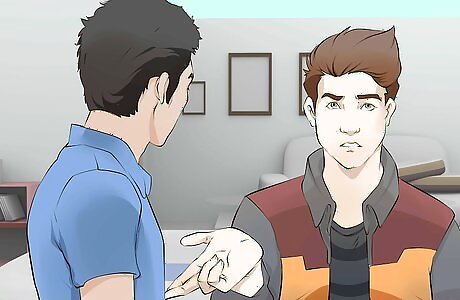
Show consideration for the person’s time. You can easily extract yourself from an unproductive conversation by framing your exit to the other person’s benefit. Use strategic statements such as “I don’t want to monopolize your time” to finish the chat. Say things like “I’m sure you’d like to talk to other people, so I’m going to scamper off.” Remember to keep your tone and body language as genuine as possible. Avoid using this tactic too often because it can make you appear disingenuous.
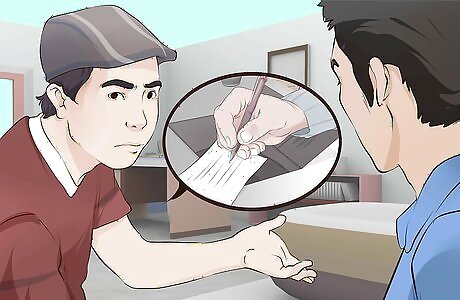
Ask for a business card or contact information. Asking for information about how to contact the person naturally indicates that the conversation is coming to an end. Find a nice way to say that you’ve enjoyed the conversation and would like to follow up for more information. Ask a specific question about the person’s business, course of study, or interests. Use this to lead you to ask “I’d love to know more about that. Do you have a business card or contact information where I could reach you for more information?” Make sure to look at the information when they give it to you, which is a sign of respect. Offer to help the person. You can say “I really enjoyed chatting with you and learning about your work. Please let me know if I can do anything to help you out.” Use this tactic with someone who you don’t already know well.

Bring the conversation full circle. If you notice the person doesn’t want to talk to you any longer, find a way to end the conversation by bringing it back to what you started talking about. Make sure to repeat what you’ve learned and thank them for their time. Keep this transition as natural as possible. Ask about something related to what started the conversation as your way to end it.

Thank the person for their time. Even if you know the person doesn’t want to talk to you and may have been impolite, take the high road and keep things positive. Make sure the person knows you enjoyed the conversation—even if you didn’t—and thank them for their time. Say something like “I’m sorry but I have to excuse myself. I really enjoyed our conversation, Chris, and want to thank you for your helpful advice.” Include the person’s name in your final statement to show that you respect and remember them. Remember to keep it positive with the statement “you catch a lot more bees with honey than with vinegar.”
Following Up on the Conversation
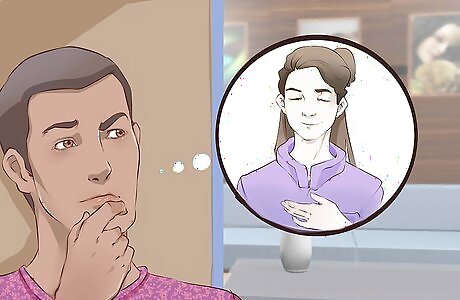
Remember that everyone has off days. If you are still unsure that a person doesn’t want to talk to you, remember that every person has off days. This can help you make the first step of following up with the person to determine if she was having an off day or really doesn’t want to talk to you. Give the person a few days between your conversation and when you next contact her. This can help her deal with possible problems she had or help her get over being upset with you.

Send a friendly message. Get in contact with the person again via text, email, social media, or phone call. You could also stop by the person’s office or class. This can open the door to a new conversation and help you determine her position on talking with you. Keep the message brief and friendly. Emphasize how much you enjoyed your last interaction. For example, write something like “I really had a nice time with you during our last chat. I hope things are well with you. Maybe you’d be interested in continuing our chat over coffee?” Avoid sending anything lengthy or multiple messages. The response you receive to this simple message will tell you a lot about the person’s position.
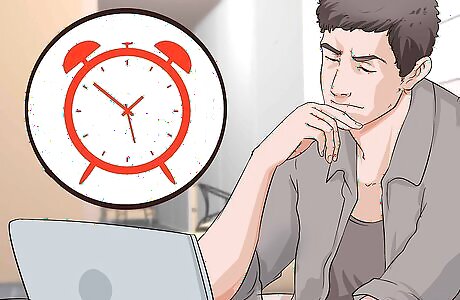
Determine the person’s position. Watch for the person’s response and how long it takes for them to read and respond to the message. This can help indicate if she doesn’t want to talk to you. Notice when and how she responds. If it’s a quick “hello, sorry I can’t get together,” chances are she doesn’t want to talk to you. If the response is friendlier and more enthusiastic, she may have just been having a bad day the last time you met. Take a lack of response as a sign the person doesn’t want to speak to you. Avoid sending further follow up messages so that you don’t upset the person—which may in turn upset you.
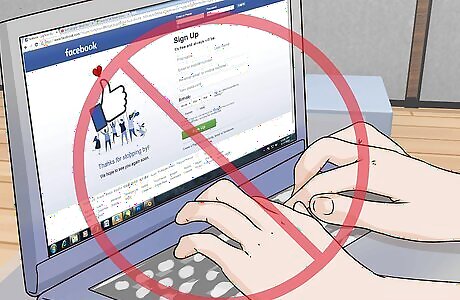
Keep your distance. If someone’s unenthusiastic responses or lack of contact with you has led you to realize that they don’t want to talk to you, stay away from her. Not only can this upset her and you, but may have other repercussions such as gaining a bad reputation. Avoid sending further messages, unfriend or unfollow them on social media. This can show that you understand the person doesn’t want to speak with you. Allow the person to contact you if you like and decide how you want to respond. You may want to consider giving her another chance. It never hurts to be kind to others, even if they haven’t always been nice to you.




















Comments
0 comment